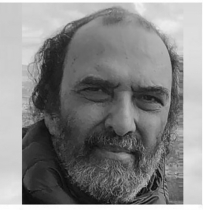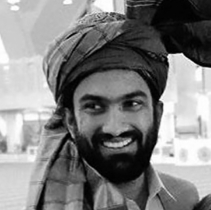
Patent Work: In a time when artificial intelligence is rewriting the boundaries of science and human capability, a groundbreaking invention has emerged—one that promises to redefine not just technology, but the very foundations of modern healthcare. Leading this extraordinary achievement is Md Ashraful Alam, a visionary researcher whose patented creation, the AI-Based Robot for Weed Classification and Removal, stands as a symbol of how innovation can transcend its origins to shape global industries. Officially registered under UK Design Number 6474829 on October 9, 2025, by the UK Intellectual Property Office, this pioneering design is a breathtaking synthesis of robotics, deep learning, and precision engineering. Originally conceived as an intelligent system for sustainable agriculture, Alam’s patent has now captured international attention for its transformative potential across the U.S. healthcare ecosystem. What makes this work exceptional is not merely its mechanical brilliance but its adaptive intelligence—a system capable of recognizing, classifying, and acting on complex data patterns with surgical accuracy. The robot’s core architecture, rooted in pattern recognition, spatial mapping, and real-time decision-making, offers a foundational framework for applications in hospital automation, infection detection, precision diagnostics, and targeted therapy delivery. Experts across both technology and medical domains are already calling it a landmark innovation, one that bridges the gap between autonomous AI systems and life-saving healthcare solutions.
Alam's patented invention uses advanced machine learning to classify and respond to targeted threats—in its original form, weeds. But its underlying architecture, with embedded real-time monitoring, object detection, and precision actuation, is directly transferable to medical AI applications such as the detection of cancerous lesions, diabetic retinopathy, or even hospital-surface pathogen analysis. The breathtaking nature of this invention lies not only in its technical elegance but in its strategic applicability to urgent U.S. healthcare challenges, especially in diagnostics and national health system modernization. At a time when the U.S. healthcare industry is burdened by both rising chronic disease rates and record-high cybersecurity breaches, Alam’s design presents a future-ready platform capable of uniting diagnostics, prediction, and data security into a single intelligent system.
He developed secure AI-driven healthcare models and big data security frameworks—is a natural extension of this pioneering work. Alam’s research career focuses squarely on solving nationally urgent issues such as the early detection of diseases like cancer, diabetes, and brain tumors, and integrating robust cybersecurity into the diagnostic pipeline. The significance of this mission is clear: chronic diseases now affect over 129 million Americans, and healthcare systems continue to lose over $10 million per breach due to unsecured data environments. Alam’s work, in both vision and execution, offers a unified platform for clinical intelligence, patient data protection, and predictive risk modeling, fully aligned with the Department of Health and Human Services' AI initiatives, the NIH’s Data Science Strategic Plan, and the White House’s National AI Strategy.
Alam’s patent is more than just a robotic design; it is a proof of concept for a new paradigm. It shows how autonomous AI systems can operate with minimal human supervision to detect, diagnose, and act based on visual cues and predictive logic. What makes this patent especially significant for healthcare is its application-ready potential. Replace “weed” with “cancerous lesion” or “tumor boundary,” and the relevance becomes immediately clear. This is not speculative, it is directly aligned with Alam’s research on AI-powered medical imaging for early cancer diagnosis, chronic disease prediction, and scalable real-time patient monitoring.
Alam’s peer-reviewed paper titled Medical Imaging for Early Cancer Diagnosis and Epidemiology Using Artificial Intelligence provides an early demonstration of how intelligent systems like the one envisioned in his patent can improve diagnostic accuracy, reduce treatment costs, and strengthen national healthcare frameworks. In that work, he detailed how AI models could recognize cancerous tissue patterns in imaging data faster and more accurately than traditional methods—directly saving lives and enabling earlier interventions. This mirrors the automated detection-and-action loop described in his patented system, validating its potential use in clinical radiology.
Similarly, his publication The Role of Predictive Analytics in Early Disease Detection maps seamlessly onto the predictive control features embedded in his robot patent. In that study, Alam introduced a shift from reactive healthcare to proactive prevention by harnessing the power of wearable sensors, electronic health records (EHRs), and historical datasets to create predictive alerts for conditions like diabetes, cardiovascular disease, and cancer. His patented AI framework, which uses trained classifiers to identify and act on biological patterns, can be adapted to serve exactly this need. It can power smart diagnostic terminals in hospitals, real-time alerts in emergency rooms, or autonomous screening kiosks in rural health centers that could save millions and reduce healthcare inequalities.
His third major study, Real-Time Analytics in Streaming Big Data, completes the blueprint. Here, Alam presents how platforms such as Apache Kafka, Flink, and Spark Streaming can be leveraged to process continuous data flows from patient wearables, imaging systems, and hospital databases. His robotic AI model, designed to operate with embedded real-time sensors and decision logic, is exactly the kind of agent that can thrive in this data-rich ecosystem. Whether deployed to monitor ICU conditions, predict readmissions, or flag deteriorating vitals, the system’s logic applies. The robot’s ability to perform intelligent actions based on streamed input mirrors the clinical needs of predictive surveillance and early-warning infrastructure—now a top priority for U.S. hospitals and public health agencies.
This convergence of theoretical and practical innovation is what makes Md Ashraful Alam’s invention breathtaking. It is not just an idea—it is already in motion across multiple levels of his research. What elevates its significance even further is its timing and alignment with national priorities. The CDC reports that six in ten Americans live with at least one chronic illness, with these diseases accounting for 90% of the nation’s $4.9 trillion in annual healthcare spending. Alam’s patent and research directly respond to that call—delivering scalable, secure, and intelligent solutions that touch every layer of care, from early diagnosis to cost reduction to infrastructure modernization.
All of this work is deeply rooted in his PhD studies in Computer Science at Colorado State University, where his academic and research focus centers on healthcare diagnostics, medical image processing, machine learning, and cybersecurity. His trajectory reflects a lifelong commitment to creating intelligent systems that are not only scientifically sound but also serve as public assets for protecting life and infrastructure at a national scale. His existing publication record—spanning AI-driven diabetes prediction, cardiovascular risk modeling, and privacy-aware cancer diagnostics—provides real evidence of his exceptional ability to convert national priorities into working prototypes. And with multiple papers currently under review in Q1 journals such as Elsevier’s Computers in Biology and Medicine and Biomedical Signal Processing and Control, Alam is poised to contribute further at the highest level of academic excellence. Ultimately, what makes Md Ashraful Alam’s work truly extraordinary is not just his ability to invent, but his instinct to reinvent. He has taken a patent rooted in agricultural robotics and reframed it as a solution for healthcare resilience. He has taken research problems often handled in isolation—diagnostics, cybersecurity, and big data modeling—and combined them into a cohesive, future-ready vision. Through his proposed endeavor, Alam is building not just AI systems, but the foundation of a smarter, safer, and more responsive U.S. healthcare infrastructure—a mission that resonates deeply with the nation’s public health priorities, economic goals, and technological aspirations.
If a nation's future rests in its ability to innovate with purpose, then Md Ashraful Alam’s groundbreaking contributions stand as a beacon of what that future can look like. His visionary patent—a UK-registered design titled “AI-Based Robot for Weed Classification and Removal”—may have been born in the fields of sustainable agriculture, but its architectural brilliance now speaks directly to some of the most urgent needs in the U.S. healthcare system. By reimagining this robot's adaptive machine learning framework for hospital environments, Alam opens the door to revolutionary possibilities—from automating disinfection and infection control to precision-based drug delivery and real-time patient data navigation. At the same time, his ongoing research in AI-driven diagnostics, early detection of chronic diseases, and real-time analytics for ICU surge forecasting proves that he is not only designing tools, but shaping systems. His mission is clear: to build secure, intelligent, and scalable technologies that unify healthcare diagnostics with data privacy protections—thereby strengthening the national digital health infrastructure of the United States. These efforts align with major national priorities like the CDC’s Data Modernization Vision, the NIH’s Strategic Plan for Data Science, and the White House’s Critical and Emerging Technologies (CET) initiative. Together, his patented design and research contributions offer more than just technical solutions—they present a transformative framework for the future of American healthcare, where innovation is not just faster, but smarter, safer, and more human-centered.





































